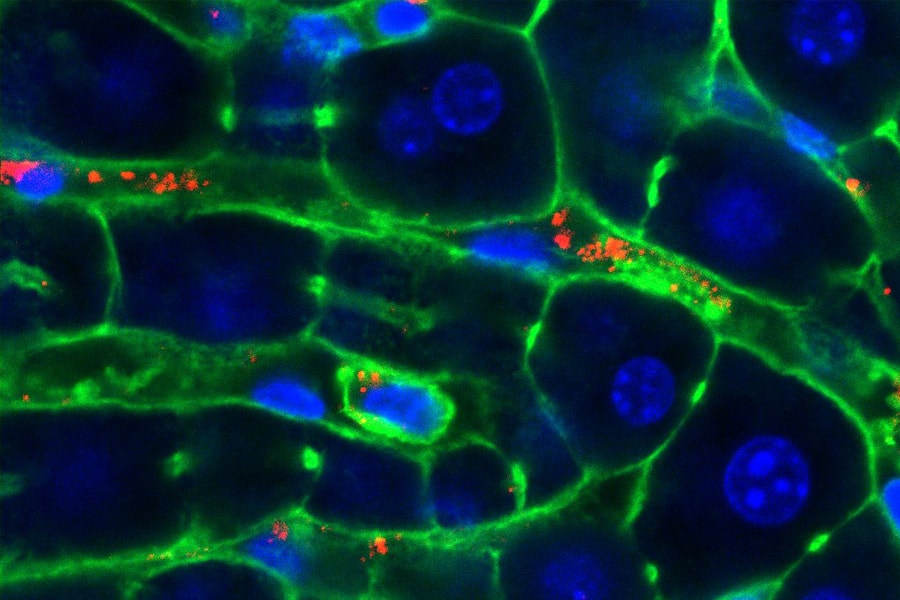
Whitehead's Research Could Revolutionize Medicine with Cutting-Edge Science
Ribonucleic Acid is a crucial component in human gene expression, and it may have the ability to treat virtually every known disease.
Katie Whitehead, an assistant professor in the Department of Chemical Engineering at Carnegie Mellon University, is leading the way with research that could one day enable personalized RNA therapies. After identifying the genes that are being over- or under-expressed in a given disease, researchers like Whitehead can introduce specific RNA molecules into the affected cells — where it is most needed — to correct the problem.
Much of Whitehead's work has focused on lipid nanoparticles — small spheres made of fat — that encase the RNA and deliver it to a target area. By altering the chemistry of the lipid nanoparticle delivery vehicles, she can control where in the body the RNA affects gene expression. So far, her group has mainly found success in achieving expression in the liver and spleen.
"One of our long-term goals, and the goal for anybody in the delivery field, is to be able to deliver things anywhere in the body, not just to the liver or spleen," Whitehead said.
Another avenue Whitehead's lab is pursuing is the quest for greater delivery control to develop a technique she's termed "protein corona engineering."
When one of her lipid nanoparticles carrying an RNA molecule enters the cell, it is coated in serum proteins, creating the protein corona. These proteins sometimes help direct the nanoparticle to a specific location in the body. Working with Ph.D. student Khalid Hajj, Whitehead is experimenting with coating nanoparticles in different types of proteins, conducting high-throughput screening to identify proteins that can guide the nanoparticles.
Whitehead works with two different types of RNA in her research. Small interfering RNA (siRNA) silences genes that are overexpressed, while messenger RNA (mRNA) promotes the expression of an unexpressed or under-expressed gene.
Part of what makes mRNA delivery so difficult is that the body often recognizes the mRNA is not where it normally belongs and attacks it, an issue Whitehead hopes to address in some of her most recent work. Unlike siRNAs, which are all the same shape and have the same number of nucleotides, mRNAs can vary widely in both shape and size. This means there are countless design decisions to be made when creating an mRNA that can either provoke, or avert, an immune response.
"One of our primary goals is the creation of lipid nanoparticle formulations that avoid the immune response," Whitehead said.
Chemical Engineering Professor Katie Whitehead discussed how her research aims to help create ingestible versions of drugs that currently have to be taken via injection.
In her most recent breakthrough, published in Nano Letters, Whitehead found that encapsulating siRNA and mRNA within the same lipid nanoparticle increased the effectiveness of both. This important finding implies that doctors could integrate both mRNA and siRNA within the same therapy for improved results.
"Many diseases are caused by both the overproduction and underproduction of certain proteins," said Hajj, a co-author on the paper. "The ability to co-deliver these two RNA drugs together will enable the treatment of such diseases, many of which do not currently have viable treatment options."
Not only does this have the potential to make life easier for doctors and patients, but combining the two RNA types within the same nanoparticle also cuts costs and streamlines the regulatory approval process.
However, not every medical situation calls for a combined siRNA and mRNA therapy, so Whitehead set about trying to replicate her results — minus one of the RNA molecules.
"We found that we could trade what you could call the 'helper RNA,' for a very inexpensive, negatively charged polymer," Whitehead said. "When we put that into the particle we could achieve the same improved effect."
By mimicking the relationship between the siRNA and mRNA molecules, Whitehead and her team managed to create a more efficient delivery method for both. Other drug delivery scientists can potentially leverage the improved efficiency of this co-delivery method without having to go through the expensive process of including both types of RNA.
Given the promise that her research holds, Whitehead was awarded the 2018 Defense Advanced Research Project Agency's (DARPA) Director's Fellowship, granted to just a fraction of those previously awarded the DARPA Young Faculty Award, which Whitehead received in 2016.
With this support, Whitehead continues to push the boundaries of a field that may one day create effective, personalized treatments for everything from hemophilia to cancer. Her work with RNA drug delivery helps advance science and medicine one step closer to repurposing this little molecule to make a big difference in the way we treat many diseases.